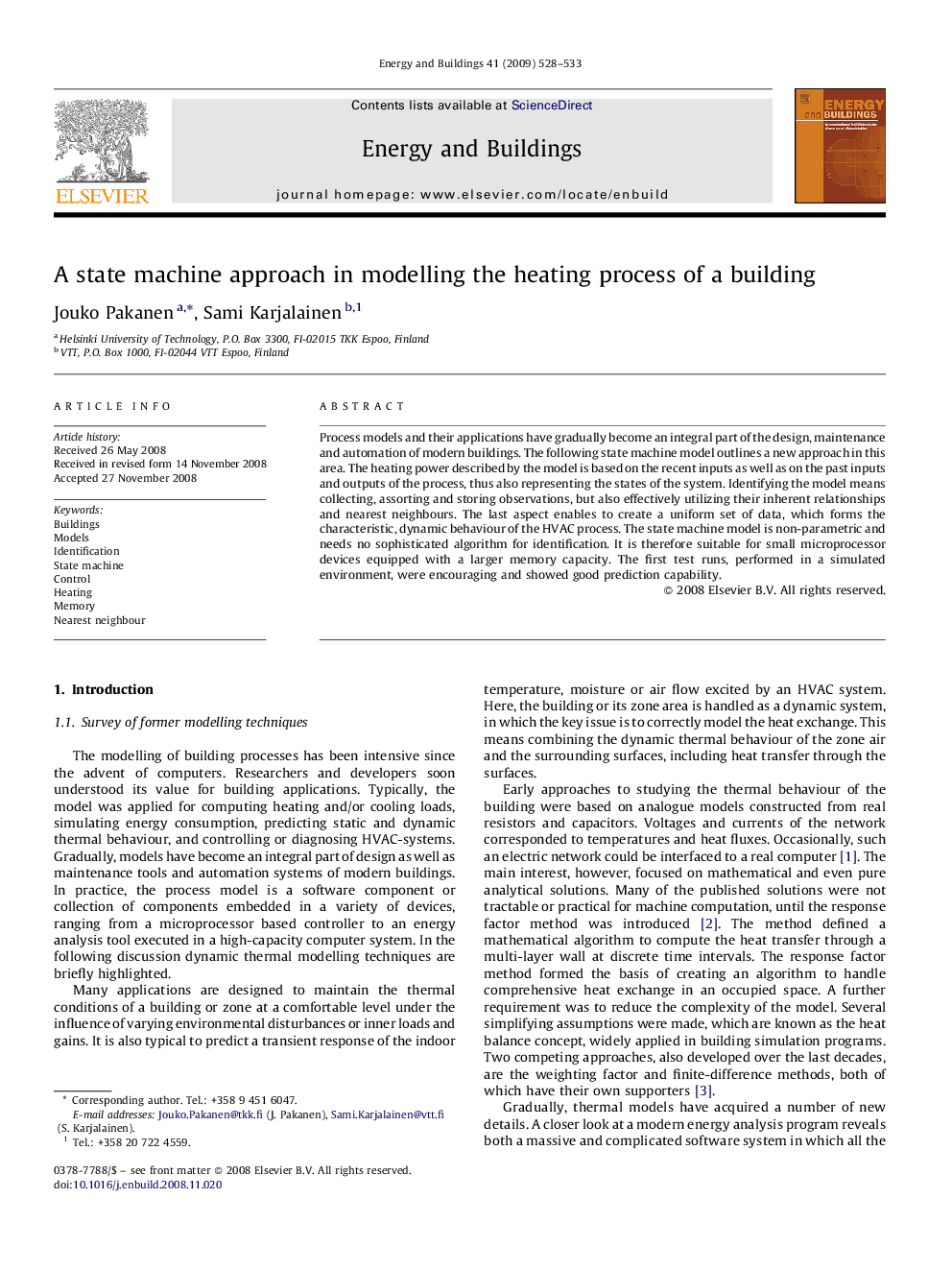| کد مقاله | کد نشریه | سال انتشار | مقاله انگلیسی | نسخه تمام متن |
|---|---|---|---|---|
| 264868 | 504118 | 2009 | 6 صفحه PDF | دانلود رایگان |

Process models and their applications have gradually become an integral part of the design, maintenance and automation of modern buildings. The following state machine model outlines a new approach in this area. The heating power described by the model is based on the recent inputs as well as on the past inputs and outputs of the process, thus also representing the states of the system. Identifying the model means collecting, assorting and storing observations, but also effectively utilizing their inherent relationships and nearest neighbours. The last aspect enables to create a uniform set of data, which forms the characteristic, dynamic behaviour of the HVAC process. The state machine model is non-parametric and needs no sophisticated algorithm for identification. It is therefore suitable for small microprocessor devices equipped with a larger memory capacity. The first test runs, performed in a simulated environment, were encouraging and showed good prediction capability.
Journal: Energy and Buildings - Volume 41, Issue 5, May 2009, Pages 528–533